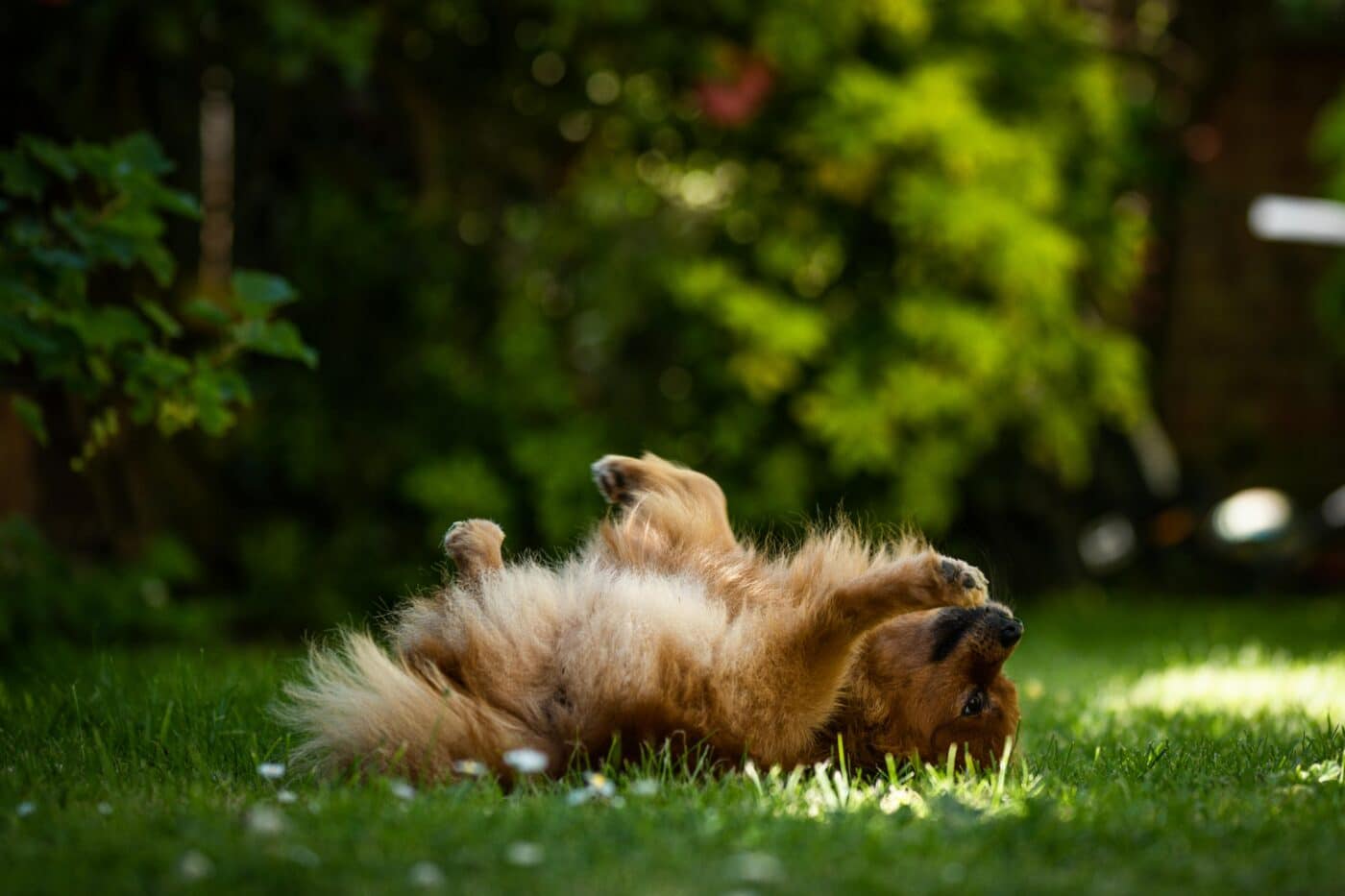 Shutterstock
Shutterstock
Dogs are full of fascinating behaviors that often leave their human companions puzzled. Whether it’s tilting their heads when you talk, circling before lying down, or eating grass for no apparent reason, these quirky actions can seem strange at first glance. However, many odd habits are rooted in canine biology and evolutionary instincts. Science sheds light on these behaviors, helping us understand why our furry friends do what they do. These scientific explanations allow us to better appreciate and care for our dogs’ unique and sometimes mysterious habits.
Head Tilting
 Shutterstock
Shutterstock
One of the most adorable dog behaviors is the signature head tilt, where your dog seems to cock its head to one side as if trying to understand what you’re saying. While many believe this is just a cute response to human speech, science suggests there’s more to it. Head tilting may help dogs hear better, particularly high-pitched sounds that catch their attention. This behavior could also be linked to their desire to read human emotions. Dogs are known to be experts at interpreting our cues, and tilting their heads could help them better process the information we’re giving through body language and tone.
Tail Chasing
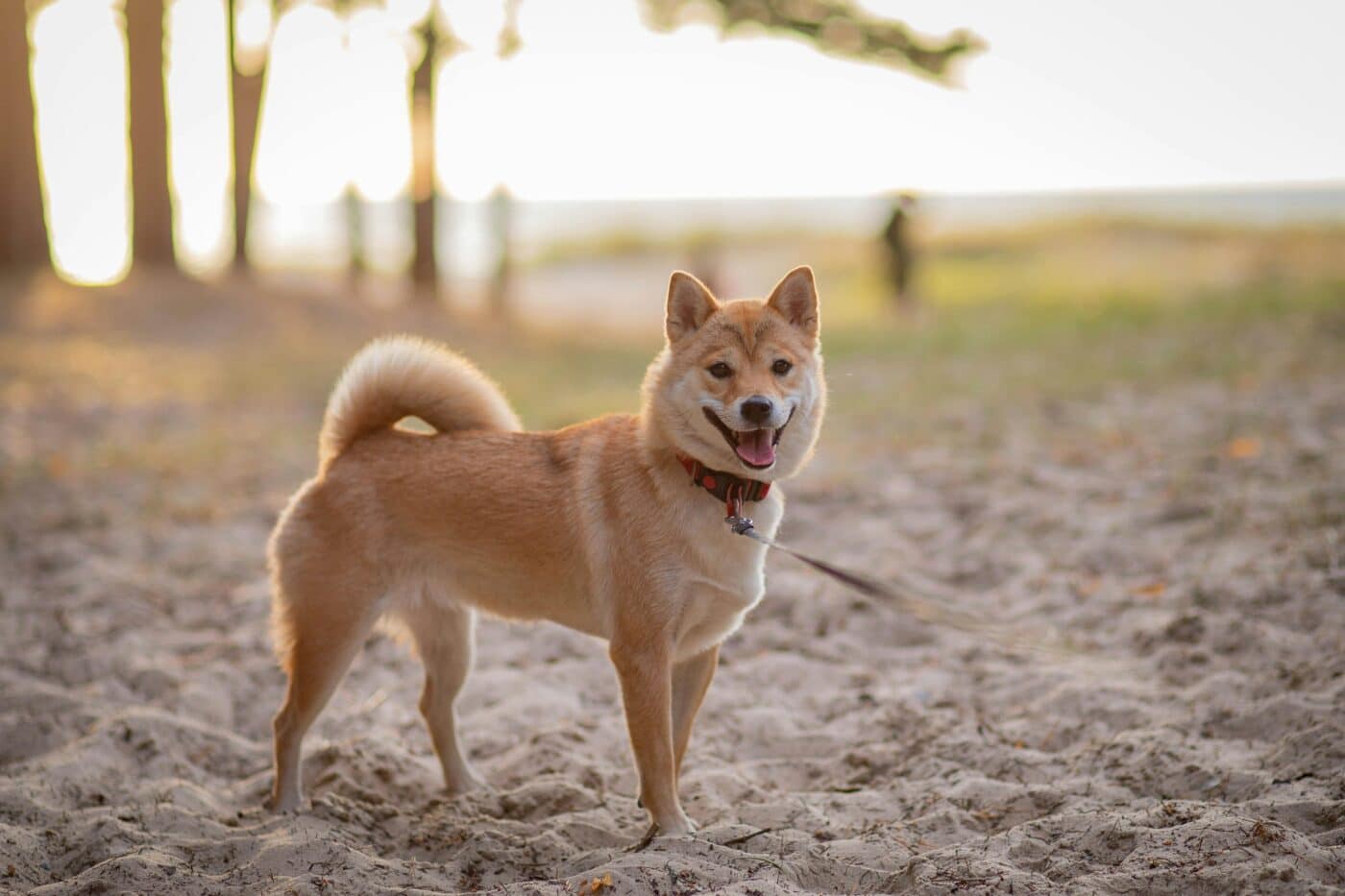 Shutterstock
Shutterstock
Tail chasing is often seen as a playful, silly activity, but there’s more to it than meets the eye. While some dogs chase their tails out of boredom or playfulness, science suggests it could be a sign of underlying issues. In some cases, it may be linked to obsessive-compulsive disorder (OCD) in dogs, especially in high-energy breeds. Tail chasing can also indicate that your dog is experiencing anxiety or stress. Physical discomforts, such as fleas or irritation near the tail, can also prompt this behavior. It’s important to monitor how often your dog engages in this habit to rule out potential health concerns.
Eating Grass
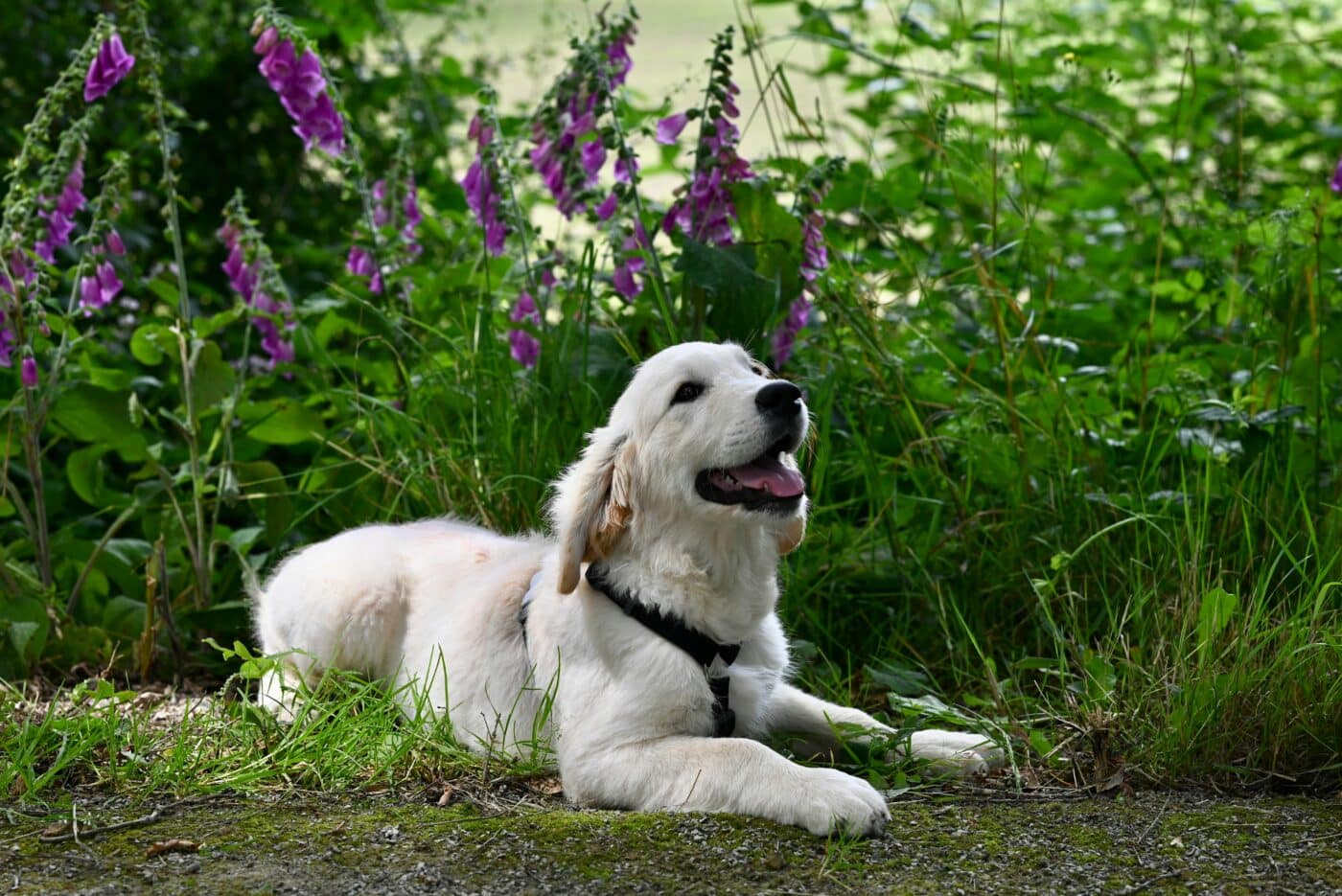 Shutterstock
Shutterstock
Why do dogs munch on grass when they’re clearly not herbivores? This strange behavior has baffled pet owners for ages, but research suggests several possible explanations. One theory is that dogs eat grass to aid digestion or induce vomiting if they feel unwell. Another explanation is that grass may provide some essential nutrients or fiber missing from their diet. Lastly, some scientists believe dogs inherited this behavior from their wild ancestors, who would consume plant material and their prey. Eating grass isn’t harmful in most cases, but it’s worth watching if your dog does it frequently.
Circling Before Lying Down
 Shutterstock
Shutterstock
Dogs often walk in circles before lying down, which can seem strange but is rooted in their evolutionary past. In the wild, dogs’ ancestors would circle to tamp down grass or leaves, creating a more comfortable and safe resting spot. Circling may also have helped them assess their surroundings, ensuring there were no lurking dangers before sleeping. Even though domesticated dogs no longer need to create makeshift beds in the wild, this instinctual behavior persists, providing a glimpse into their ancient survival habits.
Zoomies
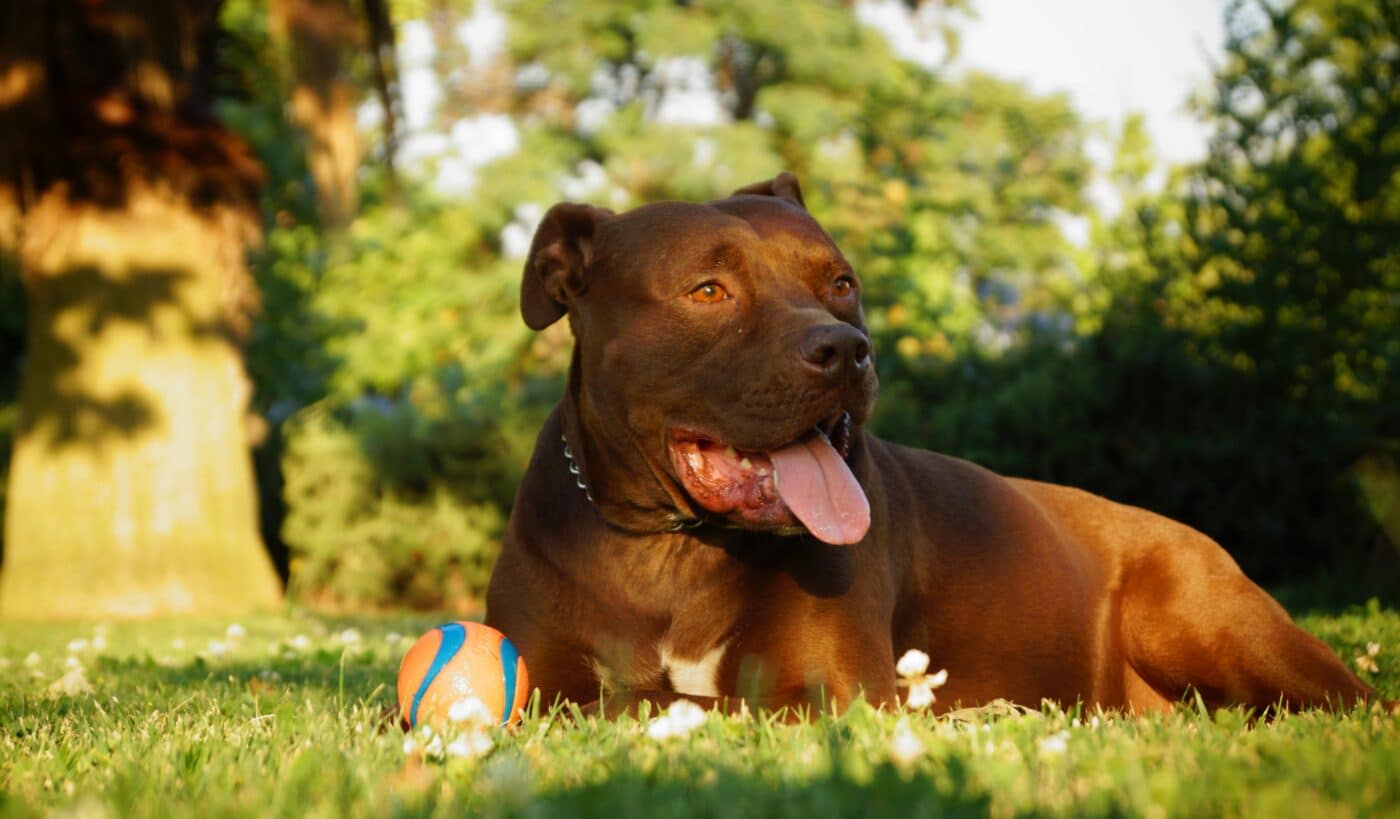 Shutterstock
Shutterstock
Every dog owner has witnessed the zoomies—a sudden, frenetic burst of energy where dogs race around at top speed, often after a bath or during playtime. Scientifically known as frenetic random activity periods (FRAPs), zoomies are a way for dogs to release pent-up energy. This behavior is more common in younger dogs or high-energy breeds, but it can happen to any dog when they’re feeling particularly excited or stressed. Zoomies can also occur as a way for dogs to relieve stress after an overwhelming situation, such as a bath. The science behind it shows that zoomies are perfectly normal and even beneficial for burning off excess energy.
Butt Scooting
 Shutterstock
Shutterstock
If your dog drags its rear end across the floor, it’s not trying to embarrass you—it’s likely trying to relieve discomfort. Butt scooting can be caused by various issues, most commonly impacted or irritated anal glands. These glands can become full and uncomfortable, prompting your dog to drag its rear to relieve the pressure. Other causes include worms, skin infections, or allergies. If your dog scoots frequently, it’s important to consult your vet to address the underlying issue and prevent further discomfort.
Rolling in Smelly Things
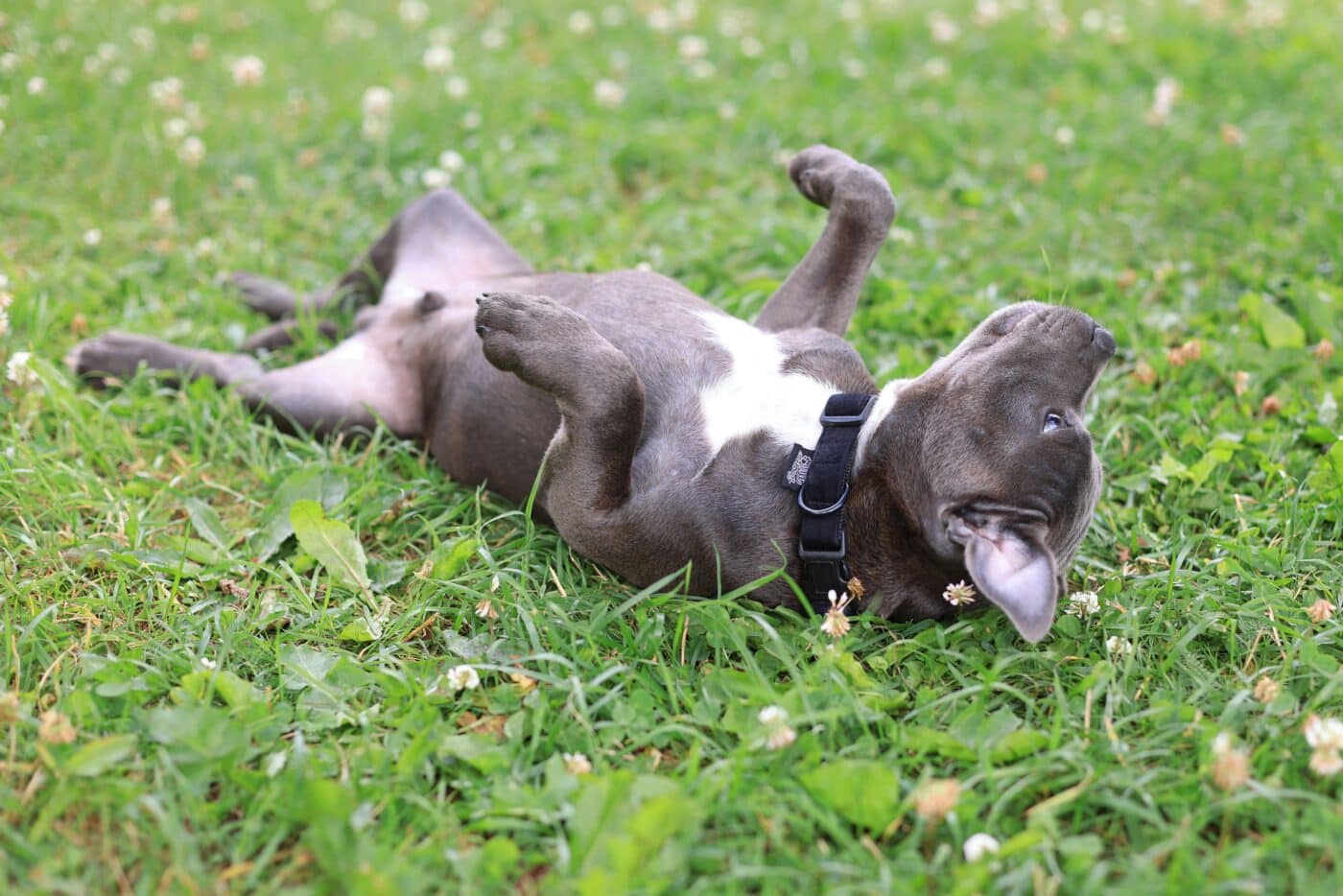 Shutterstock
Shutterstock
Ever wonder why your dog loves to roll in the most disgusting smells they can find? While this behavior might leave you baffled (and reaching for the shampoo), it actually has evolutionary roots. In the wild, dogs’ ancestors would roll in strong scents, such as the remains of a dead animal, to mask their own scent. This could help them sneak up on prey more effectively. Alternatively, some scientists suggest that dogs roll in smelly things to communicate with other dogs, signaling where they’ve been or marking their territory with a unique scent. While it’s an unpleasant habit for us, it makes perfect sense to your dog.
Barking at Nothing
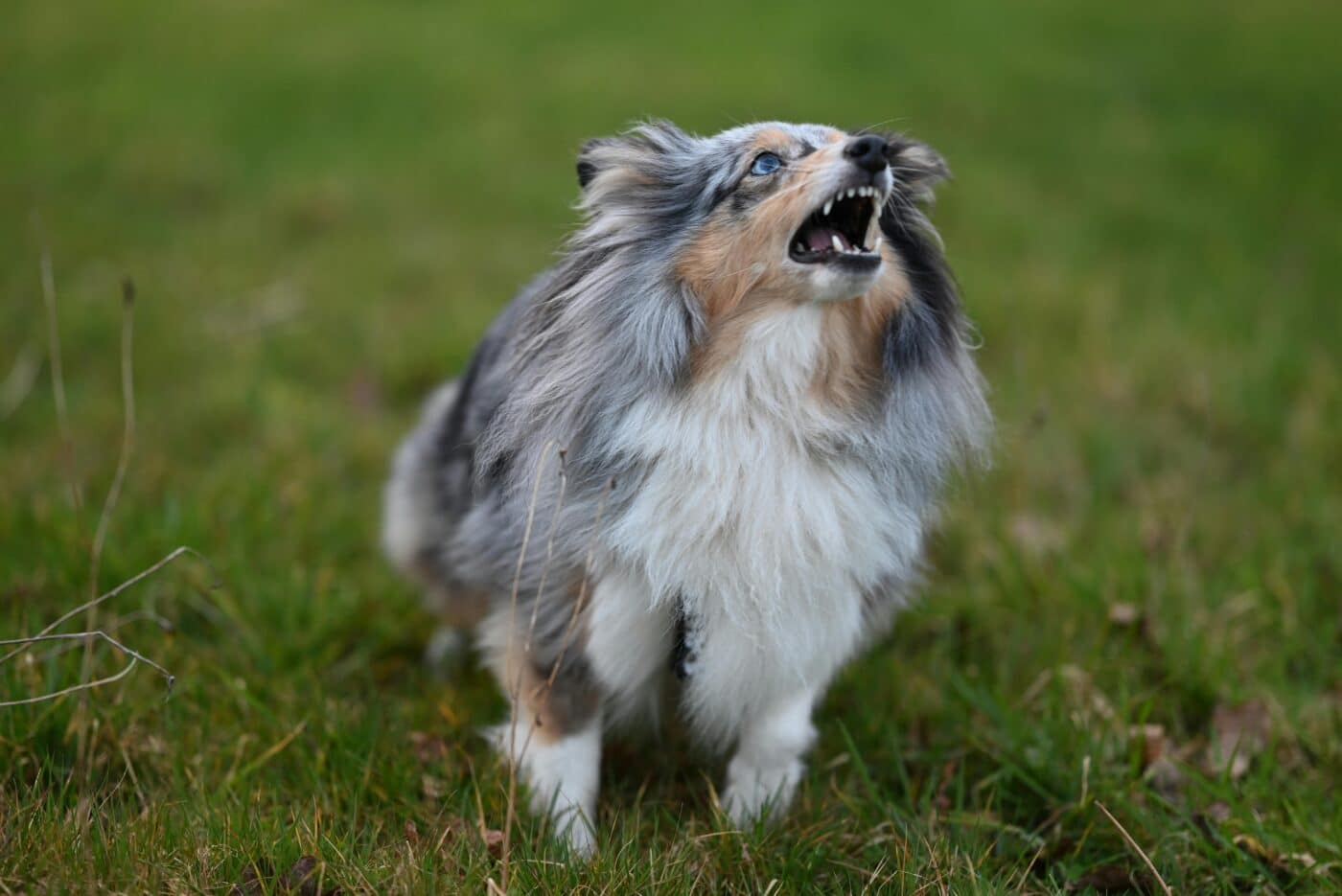 Shutterstock
Shutterstock
Dogs barking at seemingly nothing can be unsettling, but there’s likely a rational explanation. Dogs have far sharper senses than humans, particularly their hearing and sense of smell. What seems like “nothing” could be a distant sound or faint scent that our dogs pick up on. Some dogs may also bark out of boredom or anxiety, using the sound to release pent-up energy or alert their owners to something. In rare cases, cognitive decline in older dogs can lead to disoriented barking. Understanding the cause behind this behavior can help manage it better.
Licking the Air
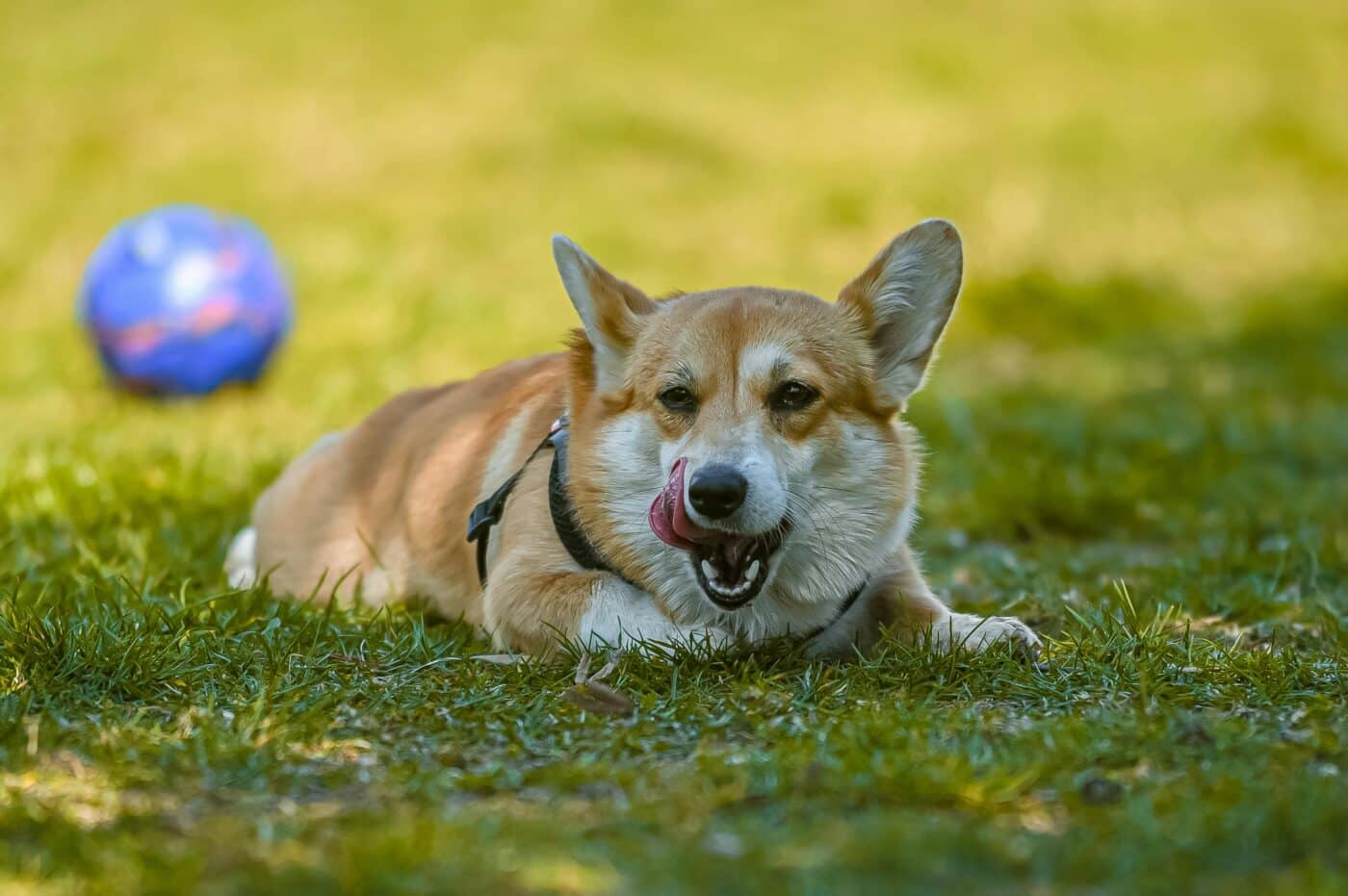 Shutterstock
Shutterstock
When your dog seems to lick the air, it can be a puzzling sight. While this can occasionally respond to something tasty they’ve just eaten, it’s often linked to other factors. Some dogs lick the air due to nausea or gastrointestinal discomfort, similar to how humans might feel queasy and swallow excessively. Air licking can also respond to stress or anxiety, as repetitive licking can soothe some dogs. If your dog is licking the air frequently, it may be worth consulting a vet to rule out medical issues.
Sniffing Other Dogs’ Rear Ends
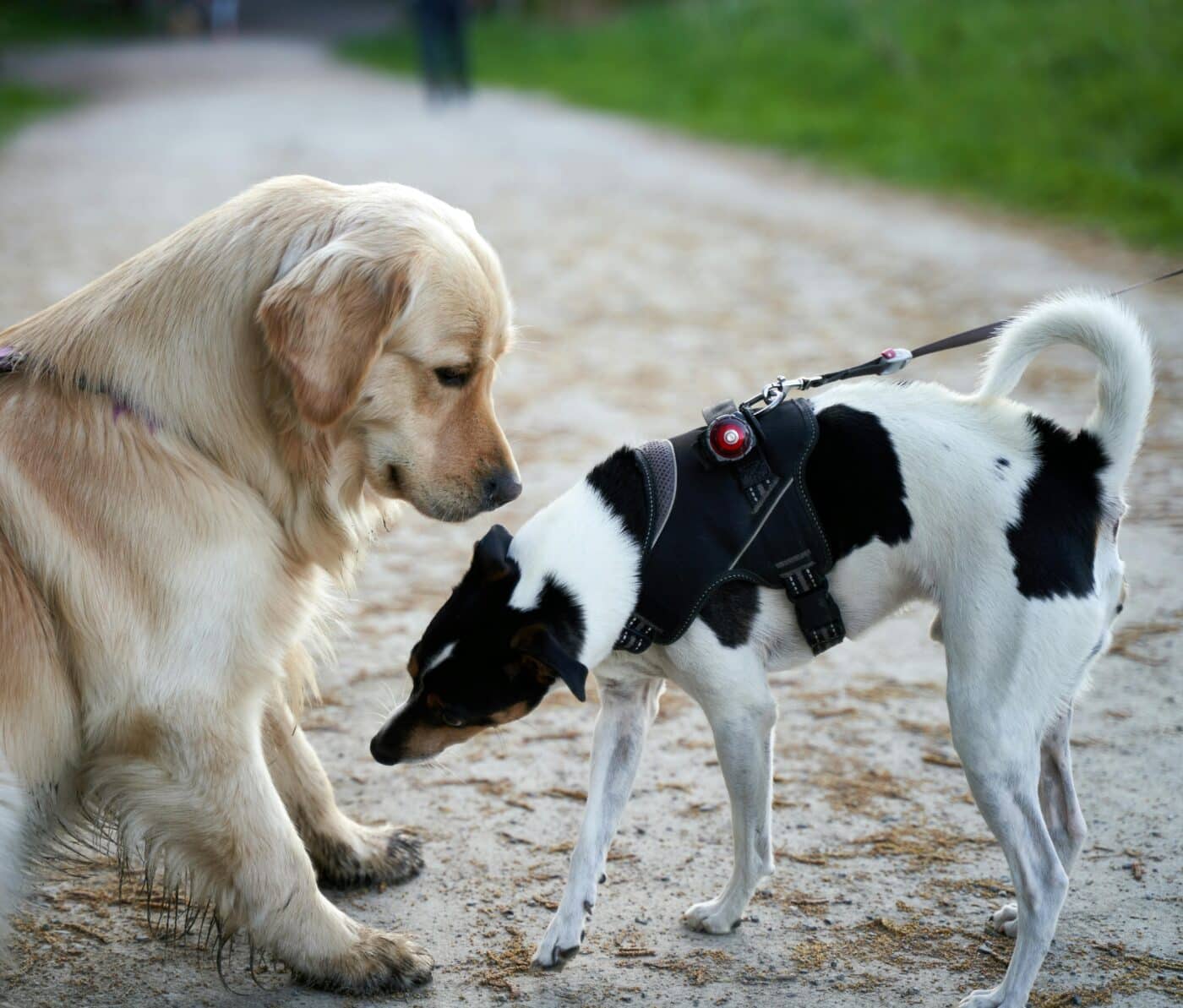 Shutterstock
Shutterstock
While humans might shake hands or exchange pleasantries, dogs greet each other by sniffing rear ends. This behavior might seem odd to us, but it’s a vital way to gather information about their new friend dogs. A dog’s anal glands release unique chemical signals, providing valuable information about the other dog’s identity, health, and emotional state. Sniffing another dog’s rear is akin to reading a personal resume in the dog world. It’s a key part of social interaction, helping dogs understand each other better and establish hierarchies.
Digging
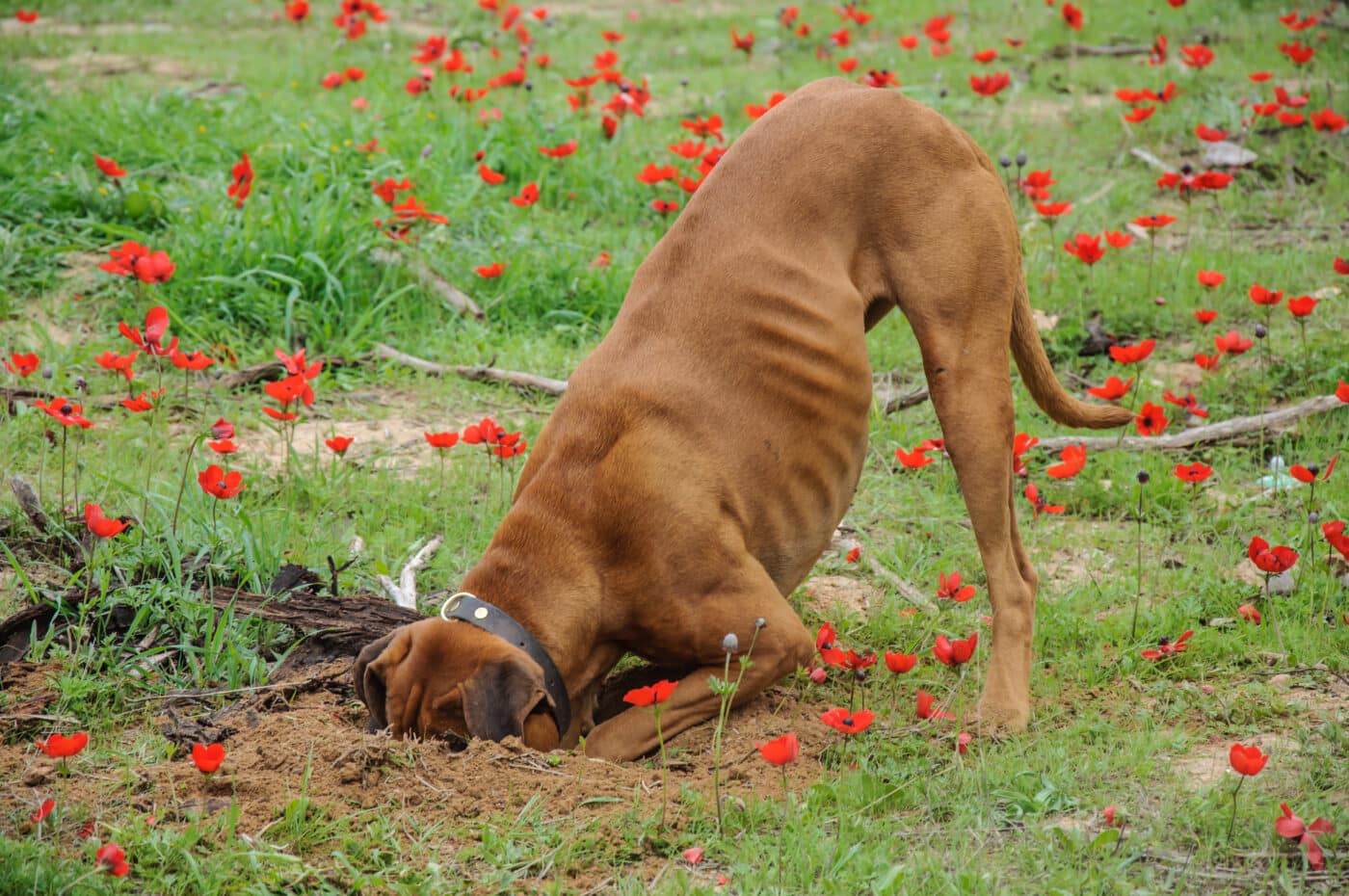 Shutterstock
Shutterstock
Many dogs love to dig in the yard, on the beach, or even on the couch. This behavior is often instinctual, harking back to dogs’ ancestors who would dig to create dens or bury food. Some dogs dig out of boredom, while others may do it to cool off in the dirt or to hide prized possessions like toys or bones. High-energy breeds, such as terriers, are particularly prone to digging to burn off excess energy. While it can be frustrating for owners, digging is often a sign of a dog’s natural instincts at play.
Yawning
 Shutterstock
Shutterstock
Dogs yawn like humans, but their yawning isn’t always linked to tiredness. In fact, dogs often yawn when they’re feeling stressed or anxious. This behavior is known as a “calming signal” in canine body language, a way for dogs to soothe themselves and communicate their discomfort. For example, a dog might yawn during a visit to the vet or when they feel overwhelmed. Yawning can also signify excitement or anticipation, such as before a walk or playtime. Understanding the context of your dog’s yawning can provide insights into their emotional state.
Sleeping in Odd Positions
 Shutterstock
Shutterstock
It might seem odd to see your dog sleeping in a strange position—curled up in a tight ball, sprawled on their back with legs in the air, or wedged in a corner. But these sleeping habits often have practical explanations. For instance, curling up into a ball helps conserve body heat and protect vital organs, a behavior inherited from wild ancestors. Sleeping on their back can indicate that your dog feels secure and comfortable, as it’s a vulnerable position. Each sleeping position offers clues about how your dog feels, whether cold, hot, or relaxed.
The Quirkiness That Makes Dogs So Lovable
 Shutterstock
Shutterstock
Dogs’ strange and sometimes confusing behaviors are part of what makes them such fascinating companions. From tail chasing to rolling in smelly things, each quirky action is rooted in science, evolution, or instinct. Understanding these behaviors can strengthen your bond with your dog and ensure their health and happiness. So, the next time your dog engages in something odd, remember that it’s not just random—it’s part of their unique charm and a reminder of how special they are as companions in your life!
 Toledo, United States.
Toledo, United States.